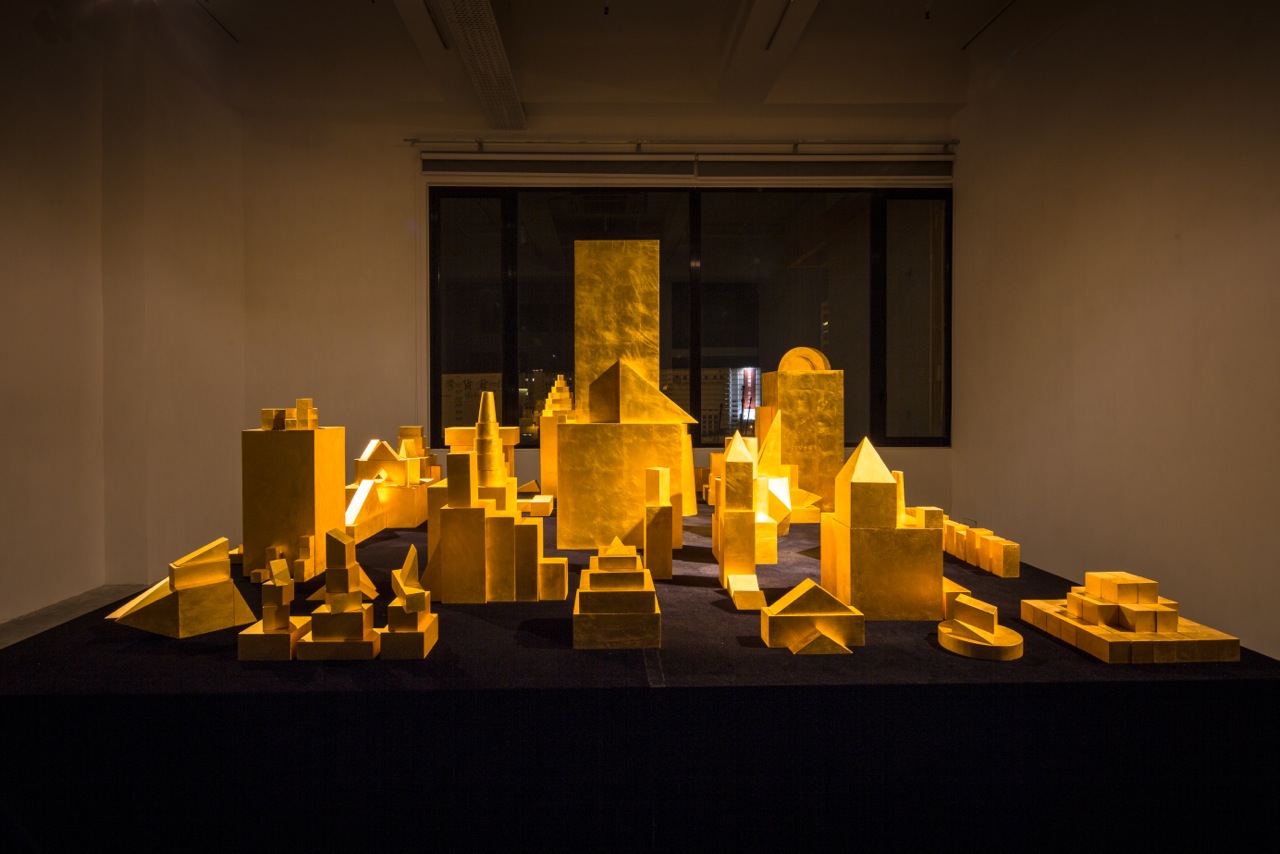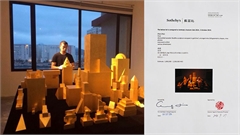
In our past historical experience, art has always occurred in two forms. The first is a cultural-spirit existence, the second a visual material existence. In the murky realm between the two, art has gained a paradoxical momentum, leading to constant changes taking place in the forms of art. To put it in other words, these two forms play a role in the operational exchange of art in reality, while also forming a central systemic issue concerning the ontology of art.
How is a new work completed by Zhao Zhao in 2014. In this artwork, he has inserted a Buddha statue he encountered on a trip through Shanxi Province into his own artistic creation. In its original context, this Buddha statue encompasses three components: a Buddha image as a matter of spiritual faith, a Buddha image as a work of handicraft, and a Buddha image as a material existence. Zhao Zhao has bestowed this statue with yet another function, the Buddha image transformed into artistic material. At this moment, the Buddha statue is just a wooden object, its unique cultural power temporarily removed, making it equal to any ordinary rock, ball of cotton or bottle of paint. Then, Zhao Zhao spent 99 days cutting the Buddha statue into 258 geometric shapes of different sizes, sometimes bent or broken, which he then wrapped in gold leaf, using that temporarily removed cultural power to reshape the now golden body. In Zhao Zhao’s work, the original Buddha statue has completed a transformation of value, rediscovering its destiny with the masses as it steps down from the altar. The 258 gilded geometric shapes are laid out in a memorial fashion, and when they are exhibited within the gallery, this ancient Buddha statue has undergone a metamorphosis into a work of contemporary art.
After several instances of transformation and circulation, this artwork has become filled with all manner of possibilities for interpretation and understanding. From the very beginning, this long process and its real results have all existed as a single whole. Whether the auction succeeded or failed, it would not affect the occurrence of this work of art in reality. Or perhaps it was precisely because of these designed encounters in reality that this work began to depart from the traditional materializing system to take on a new context and an entirely new perspective through which to view it.
For Zhao Zhao, How is a plan artwork. Its exhibition setting is not the gallery or the auction floor but in the mutual relationships between the market and reality. In other words, it does not have an absolutely defined exhibition setting, because it is still occurring. All that we are able to perceive is the artist’s “actions.” Just as the auction buyers are viewing this artwork on the auction floor, they are about to become a component of this artwork to be viewed again.
In the linguistic system of art, “action” can be a created object, a view, an act, a storm. Zhao Zhao’s artwork is not obsessed with the creation of things, even if How possesses all of the traits of a work of visual art. His goal is not to exhibit this object, to create a dead visual specimen. It is like a stone. The artist is no longer focusing the entirety of his efforts on how to create an exquisite, conceptual, contemporary stone implement. What the artist really cares about is the ripples and waves this stone creates when it is cast into the water, and the cascade of linked and immovable aftershocks. The linked effects are the artist’s designs and responses to the predicaments of reality; the immovable component is reality, the unpredictable, indescribable reality, the reality occurring right now, and the firsthand scene.
At this moment, Zhao Zhao is no longer an observer, nor is he a describer, looking down from the distance with a raised canvas. He is within the picture that may be obtained in the future. All of the artist’s motions in the process of presenting the subject have the potential to become components of the picture. Whether the auction is a success or a failure, for Zhao Zhao, it is just an unknown, and this unknown, and the changes contained within it, will all become the possible forms of the artwork. In other words, the artist is no longer a fixed subject. Instead, the artist is both subject and object. He is in a split state, being both watcher and watched. It is precisely these changes that form the main developmental thread of How.
When Zhao Zhao took this artwork from the exhibition hall to the auction floor, the artist no longer had any clear, essential identity in reality. He has become an individual stripped of his part in the division of labor. He may be a destroyer of divine authority, he may be a failed auction participant, or he may just be a busybody using his artwork to test reality.
What is Zhao Zhao testing? His interest lies in the art system that maintains artistic exchange and occurrence. Art has never been only about the artwork. What interests Zhao Zhao are the exhibition systems, market systems and exchange methods beyond the artwork. This system happens to be a very important issue in Chinese contemporary art in recent years, even a symbol of Chinese contemporary art: it has the most art organizations of any nation of the world, as well as astonishing auction records and a bizarre market order. Perhaps this understanding is a bit inaccurate. We are within it, a part of it, and we take part in its occurrence.
In the end, the artwork failed to sell at auction. For Zhao Zhao, the goal was not to complete an exchange between spirit and material but to gain the process of the art’s circulation and realization through substantive participation in the art system. Perhaps what really interests him is the question of how, at a time when artistic creation is no longer subject to any formal limitations, the occurrence of things can become art.

